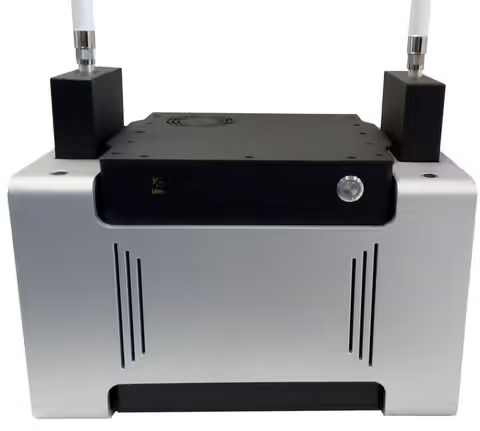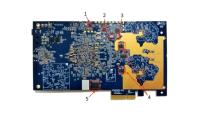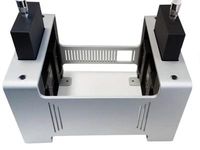
The LimeNET for carriers – what you need to know
The LimeNET campaign brings together three incredibly powerful, flexible systems that we believe will democratise wireless innovation. In our first series of blog posts (LimeNET Mini here) following the launch of the LimeNET campaign we look at the LimeNET carrier-class wide area network - which allows rapid, low cost expansion of 3, 4 and 5G networks - as well as for systems small-network mobile comms, for example in hotel rooms and office facilities.
Further information is also available on the Crowd Supply page, which you visit here to back and share this important campaign.
Three carrier-grade components - or the complete package
The LimeNET Base Station is a limited-edition, highly discounted combination of the LimeNET Core and LimeNET Amplifier Chassis detailed below. This is everything you need to set up your own cellular network, all in one compact package and with a savings of over $7,000.
If you miss out on the LimeNET, the individual components, the Core, the Amplifier and the new 4x4 MIMO LimeSDR QPCIe board are available separately.
We'll break these down individually in later posts, however the LimeNET Core is a top-of-the-line gaming PC outfitted with a newly developed LimeSDR QPCIe board, the LimeNET Core is a software defined radio powerhouse.
Designed to mate perfectly with LimeNET Core, the LimeNET Amplifier Chassis provides the necessary hardware to turn your SDR setup into a long range wireless network.
And finally the new LimeSDR board. Whereas the LimeNET Mini and LimeNET Enterprise are based on the original LimeSDR USB boards (micro Type-B and Type-A, respectively), the LimeNET Core, and therefore the LimeNET Base Station, are based on the entirely new LimeSDR QPCIe board. This new board is a much more sophisticated version of the original LimeSDR PCIe board. In particular, it has two LMS7002 transceiver chips instead of one, which allows for a 4x4 MIMO configuration instead of a 2x2 MIMO configuration.
A look inside LimeNET Core
- Mainboard
- Form factor: ASUS X99-M WS micro-ATX
- Processor: Intel Core i7-6950X, 10 cores, 20 threads, 3 GHz (3.5 GHz boost), 25 MB smart cache
- Memory: 64 GB (4 x 16 GB) DDR4 2133 MHz
- Storage: 1 TB SATA 3 M.2 SSD
- Video: GIGABYTE GV-N210SL-1GI graphics card with NVIDIA GeForce 210
- Audio: 8-channel Crystal Sound 2 and 12,000-hour capacitors
- Connectivity: 2 x USB 3.1, 4 x USB 3.0, 2 x USB 2.0, 8 x SATA 6 Gb/s, 2 x Gigabit Ethernet, 3x3 802.11ac Wi-Fi, 1 x Bluetooth 4.0
- Radio (Internal)
- Board: LimeSDR QPCIe
- Shielding: CNC-milled aluminum enclosure
- Antennas: 4 x
- Cables: 4 x U.FL (inside aluminum case)
- Amplifier: Set of two (MIMO) 10 W RF output power amplifier + duplexer + antenna. And coming with a choice of 4 bands: 700 MHz, 1.8 GHz, 2.6 GHz, 3.5 GHz
How will this be set up?
The following image shows the current internal components of the LimeNET Core. The exact make and model of the RAM and SSD components may change based on availability at the time of manufacture.

1. Intel Core i7 - 6950X Processor Extreme Edition2. Crucial CT16G4DFD8213 64GB (4x 16GB) DDR4 2133 MHz3. Pre-amp bracket: MIMO 15 db LNA, MIMO TX SAW filter, MIMO 20 db PA4. GIGABYTE GV-N210SL-1GI graphics card with NVIDIA GeForce 2105. Crucial MX300 SATA 3 internal 1 TB SSD w/ M.2 interface6. Corsair CX750MW Power Supply Unit7. LimeSDR QPCIe board8. ASUS X99-M WS micro-ATX mainboard
As well as an exceptionally powerful processor - the i7 10 core - and a very powerful graphics card, the heart of the core for wireless applications in the LimeSDE QPCIe board. A 4x4 MIMO board running two Lime LMS7002 chips.

LimeNET QPCIe board (front side)
1. RF RX connectors15. IC43 - EEPROM2. J43, J42 - reference clock in and out16. IC43 - FX3 flash boot jumper3. LVDS interface17. J28 - FPGA JTAG (0.1”)4. IC40, J41 - GNSS receiver and antenna connector18. SW2 - 4-bit switch5. IC38 - FLASH memory19. IC21, IC23 - FPGA configuration flash memory6. J39, J38 - 2 x PMOD connectors20. BATT1-RTC backup battery7. LEDs21. IC39 - temperature sensor8. SW3 - power control switch22. IC39 - temperature sensor9. J44 - external 12 V power supply connector23. RF RX connectors10. J45 - 6-pin PCIe power connector24. RF TX connectors11. J31 - FX3 JTAG (0.05”)25. RF PAs, switches, and connectors12. IC34 - USB 3.0 controller (FX3)26. IC1, IC4 - 2 x FPRF LMS7002M transceivers13. J29 - USB 3.0 connector (micro Type-B)27. RF TX connectors14. IC35 - FX3 flash memory

LimeNET QPCIe board (back side)
1. IC49 - clock synthesizer2. IC46 - phase detector3. XO1-3 VCTXO4. IC2, IC3, IC5, IC6-RF transceivers EEPROMs5. IC42, real time clock
The core sits inside the amplifier. While you can use the LimeSDR QPCIe board with other computers, LimeNET Core and, by extension, LimeNET Base Station are the only complete systems we’ve tested and pre-qualified as part of the LimeNET ecosystem. Of course, we encourage developers to integrate LimeSDRs of all flavors into new hardware configurations, but our ability to support and maintain hardware configurations is currently limited to those in the LimeNET family.

How much will it cost and when will it be delivered?
We will be making just 10 complete LimeNET systems available to backers - costing $17,500 USD (a discount of over $7,000). Once these are gone, or if you prefer to access the individual components and to engineer your own system around them / work with existing components, the campaign prices are as follows:
- Core - $7,699 for those ordering in the campaign, rising to $8,099 for those ordering after the campaign finishes and the devices ship, and $8,499 thereafter.
- Power amplifier- $13,199 during the campaign. $13,999 upon closing to the point of shipping. $14,999 thereafter.
- LimeSDR QPCIe - $2,599
The devices will ship from:
- LimeNET complete network in a box - February 2018
- LimeNET Core - November 2017
- LimeNET Amplifier - February 2018
- LimeSDR QPCIe - November 2017
App stores and getting up and running
LimeNET is built on a robust, community-driven software stack, including GNU Octave, Ubuntu, Pothosware, Lime Suite, GNU Radio, Lua Radio, pyLMS7002M. We’ll be announcing more information on our app stores shortly, but they have had a face lift and, though our partnership with Ubuntu, become easier to access and get started with.